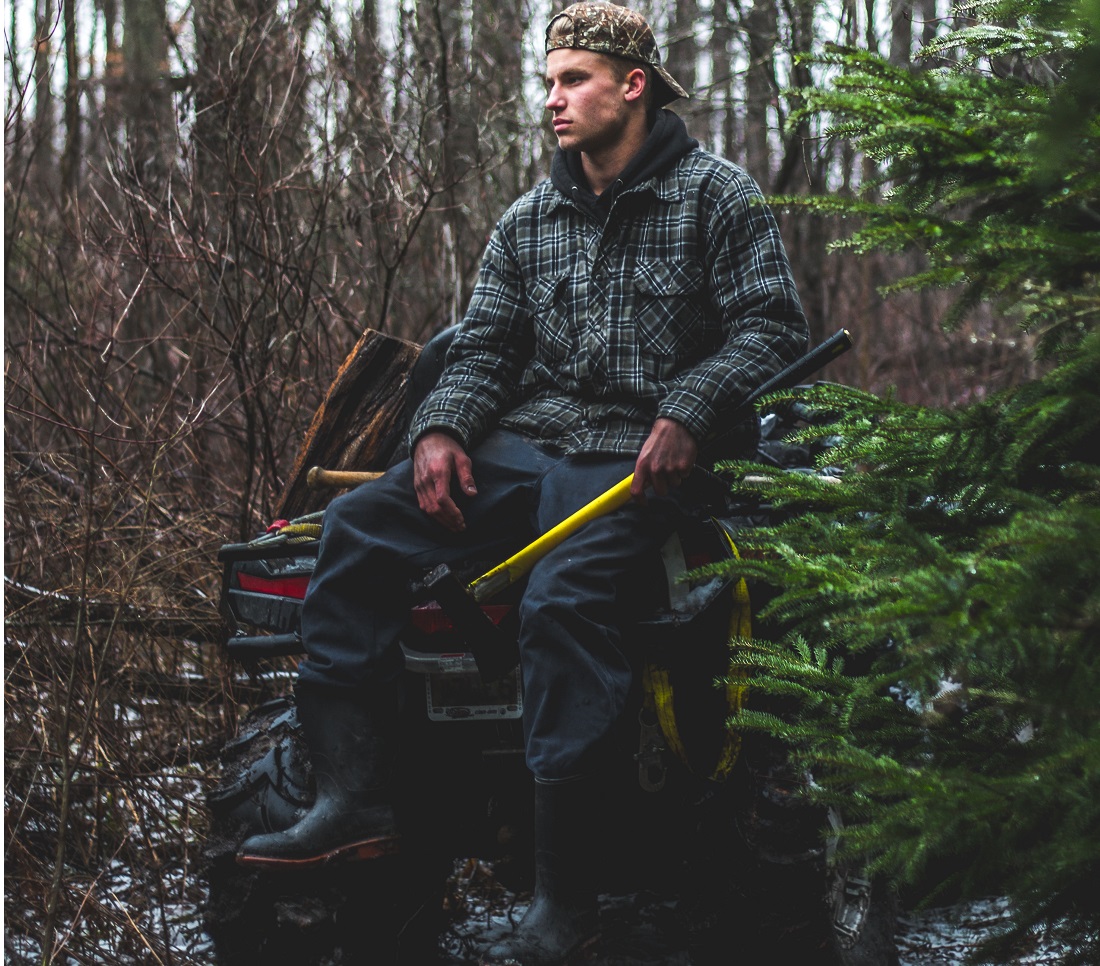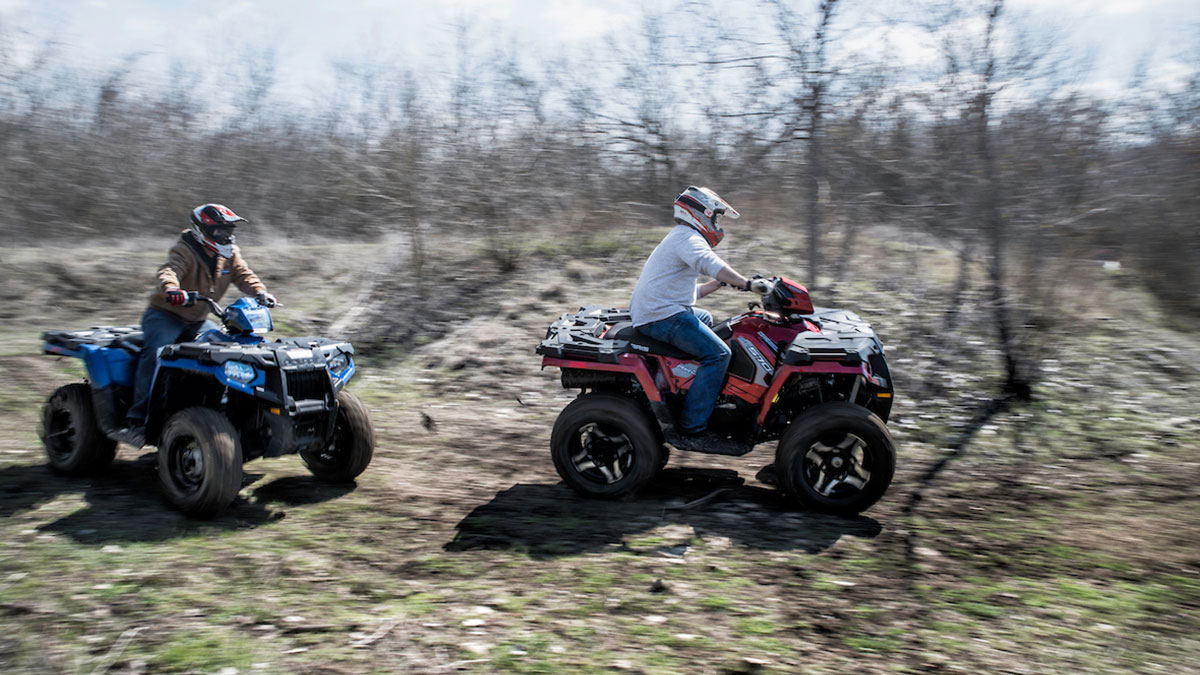ATV Enthusiasts Join: Dive into the Heart-Pounding Globe of Off-Road Happiness
ATV Enthusiasts Join: Dive into the Heart-Pounding Globe of Off-Road Happiness
Blog Article
ATV Riding Techniques: Understanding the Art of Off-Roading

Body Positioning
To effectively browse via challenging off-road terrain, it is important for ATV riders to regularly maintain appropriate body placing. Keeping the appropriate body position while riding an ATV not just enhances control and security yet likewise guarantees the cyclist's security. By embracing the appropriate body placing techniques, cyclists can properly distribute their weight, improve their balance, and lessen the risk of injuries or crashes.
One secret aspect of proper body placing is keeping the feet on the foot pegs. Positioning the feet on the foot fixes enables the motorcyclist to preserve security and control over the ATV. The cyclist's knees ought to be somewhat curved, giving a small suspension to take in shocks and maintain equilibrium. In addition, the biker's top body need to continue to be kicked back and adaptable, enabling for smooth and fast movements when needed. This consists of maintaining a light grasp on the handlebars to keep control without extreme pressure.
Additionally, the biker's eyes ought to always be focused in advance, scanning the terrain and anticipating any barriers or modifications in the path. By maintaining an ahead look, riders can make split-second decisions and respond properly to challenging terrain.
Throttle Control
Building upon the relevance of proper body positioning for ATV cyclists, mastering throttle control is an important ability that enables riders to efficiently steer through different off-road terrains. Strangle control refers to the capability to control the amount of power delivered to the ATV's engine. By comprehending how to adjust the throttle, riders can make certain a smooth and controlled velocity, enabling them to browse barriers with precision.
One of the basic elements of throttle control is finding out to regulate the throttle efficiently. Sudden or jerky activities can trigger the ATV to lose traction or become unpredictable, making it difficult to keep control. Rather, motorcyclists should aim for gradual and calculated throttle inputs, particularly when going across difficult surfaces. This method enables the ATV to keep a consistent rate and gives much better traction, minimizing the threat of crashes.
Along with smooth modulation, motorcyclists have to additionally discover exactly how to stabilize the throttle with various other riding strategies, such as body positioning and stopping. When climbing up steep hillsides, bikers need to use enough throttle to keep energy without overpowering the ATV or triggering wheel spin. Similarly, when descending steep inclines, motorcyclists must make use of the throttle in mix with proper body braking and placing to maintain control and protect against the ATV from sliding or toppling.

Braking Methods
An essential facet of ATV riding strategies is grasping efficient braking techniques. When it concerns off-roading, understanding just how to brake properly can make a substantial distinction in your security and control over the vehicle. One of the most critical stopping strategies is using the front brake greater than the rear brake. The front brake supplies most of the quiting power, so it is important to utilize it judiciously. Nevertheless, it is essential to keep in mind that severe stopping with only the you could try this out front brake can trigger the ATV to pitch ahead, potentially bring about loss of control and even turning over. As a result, it is recommended to use both brakes at the same time, yet with more pressure on the front brake. Another crucial method is to avoid securing the wheels while stopping. Locking the wheels can lead to skidding, making it tough to maintain control. To prevent this, squeeze the brake levers progressively and release them a little if you feel the wheels securing. By grasping these braking strategies, you can boost your ATV riding abilities and ensure a safe and enjoyable off-roading experience.
Cornering Techniques
One important element of mastering ATV riding methods is recognizing reliable cornering methods. Collaring on an ATV can be challenging, yet with the best techniques, riders can browse click site turns safely and efficiently. The key to successful cornering is to keep control of the ATV while optimizing grip and lessening the threat of tipping over.
To perform an appropriate cornering technique, motorcyclists should approach the turn at an appropriate rate, ensuring they are not going also rapid or also slow-moving. It is essential to move the body weight in the direction of the inside of the turn, leaning into it to keep equilibrium and security. This assists to counterbalance the centrifugal pressure and keeps the ATV upright.
In addition, riders should keep their eyes concentrated on the exit factor of the turn as opposed to the instant course in advance (ATV). This permits for smoother and more precise steering, as it assists the cyclist prepare for any challenges or adjustments in terrain
Additionally, proper throttle control plays a substantial duty in cornering. Riders need to modulate the throttle efficiently, preventing unexpected accelerations or slowdowns, which can trigger loss of control.
Uphill and Downhill Riding
When browsing off-road terrain, ATV bikers need to master the strategies for uphill and downhill riding to maintain control and make sure safety. Uphill riding calls for a mix of equilibrium, throttle control, and weight distribution. As riders rose high inclines, they must lean ahead to change their weight in the direction of the front of the ATV, which boosts grip on the front wheels and protects against the vehicle from turning backward. ATV. Furthermore, preserving a regular throttle and staying clear of sudden acceleration or slowdown aids to stop the ATV from shedding momentum or getting stuck. Downhill riding, on the various other hand, calls for motorcyclists to lean back and shift their weight in the direction of the rear of the ATV. find out here now This assists to maintain stability and stop the car from flipping onward. It is essential to utilize the brakes sparingly and use them gradually to avoid securing the wheels and shedding control. Additionally, motorcyclists ought to select the path with the least barriers, as browsing downhill can be extra tough because of the enhanced speed and lowered traction. By grasping the techniques for uphill and downhill riding, ATV motorcyclists can confidently deal with different off-road terrains and take pleasure in a risk-free and exhilarating experience.
Conclusion
In conclusion, grasping the art of ATV riding needs a mix of body positioning, throttle control, braking techniques, and reliable cornering. Uphill and downhill riding likewise need particular skills to browse safely. By carrying out these strategies, motorcyclists can improve their off-roading experience and enhance their total control and safety and security on the ATV.
ATV Riding Techniques: Mastering the Art of Off-Roading is an extensive overview that dives into the details of understanding the abilities needed for off-road ATV riding. Whether you are a newbie or an experienced motorcyclist, ATV Riding Techniques: Understanding the Art of Off-Roading provides important recommendations to help boost your off-road ATV riding skills to the next level.

Report this page